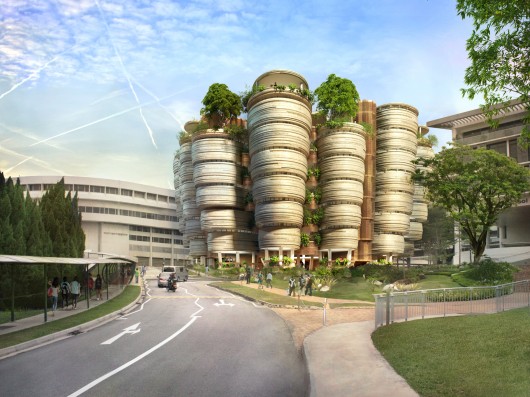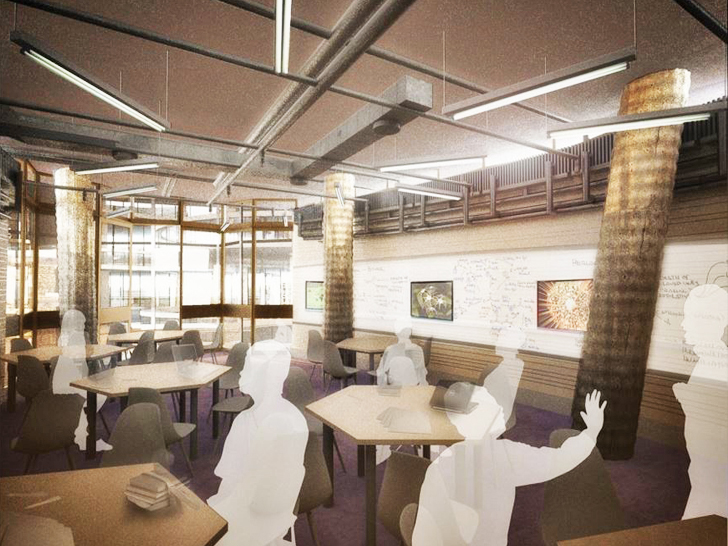In a competition to design a "Learning Hub" for students at Nanyang University in Singapore, London-based firm Heatherwick Studio has won with a rounded, hive-like design. The £360 million project has won the BCA Green Mark Platinum Award for Sustainability from the government of Singapore.
The architects said that the design is meant to transcend the original purpose of a university building, redefining the spaces where students collaborate.
Rather than a building principally meant to house educational texts, they sought to design an appealing place for students to work and socialize, given the fact that the Internet makes it possible for educational information to be accessed outside of university buildings.
Fifty-six rooms will be condensed into a space with no conventional corridors, and will center around an area that can be entered from 360 degrees, Arch Daily reports. This central space will link all of the structure's separate towers, which contain classrooms stacked upon one another. Selected floors will also feature gardens.
"Another inspiration for the hub was a wish to break down the traditional, square, forward-facing classrooms with a clear front and hierarchy, and move to a cornerless space, where teachers and students mix on a more equal basis," Heatherwick Studio said in a statement.
"In this model, students work together around shared tables, with teacher as facilitator and partner in the voyage of learning, rather than ‘master’ executing a top-down model of pedagogy."
Heatherwick will work with local architects CPG Consultants to fully realize the Learning Hub. All renderings courtesy of Heatherwick Studio.
Related Stories
| Aug 19, 2011
Enhanced acoustical design
Ambient noise levels in some facility types are trending up and becoming a barrier to clear communication between building occupants.
| Jul 22, 2011
The Right Platform for IPD
Workstations for successful integrated project delivery, a white paper by Dell and BD+C.
| Jul 22, 2011
High-performance windows and doors
Learning objectives After reading this article, you should be able to: Understand issues of thermal performance and energy efficiency in relation to window and door systems; describe optimal detailing of the window-wall interface and how it contributes to building performance, sustainability, and occupant well-being; understand how durability contributes to sustainable windows/doors; and list sustainable O&M requirements for window and door systems.
| Jul 21, 2011
Falling Architecture Billings Index reflects decrease in design demands
This months Architecture Billings Index (ABI), provided by the American Institute of Architects, is almost a full point lower than last month’s reported score. June’s reading of 47.2 was short of the required 50 to achieve billings increases, making July’s reading of 46.3 an unwelcome sign of market tidings.
| Jun 29, 2011
New leadership role for architects in net-zero design
BD+C Editorial Director Rob Cassidy talks with RNL Design's Tom Hootman, AIA, about the changing role of architects in net-zero designs.




















